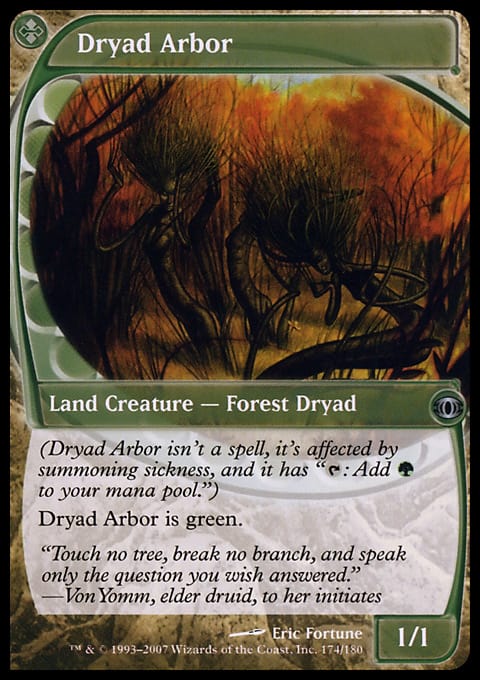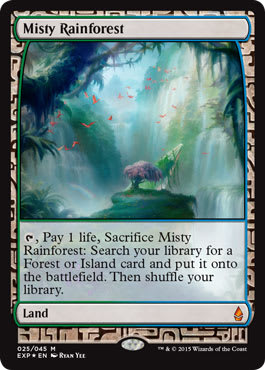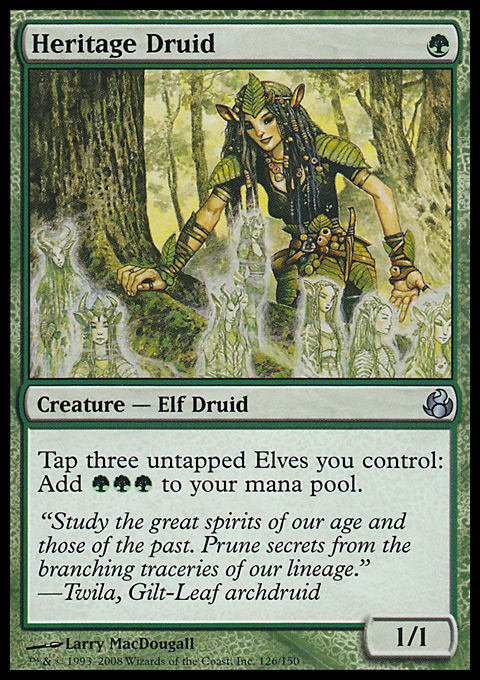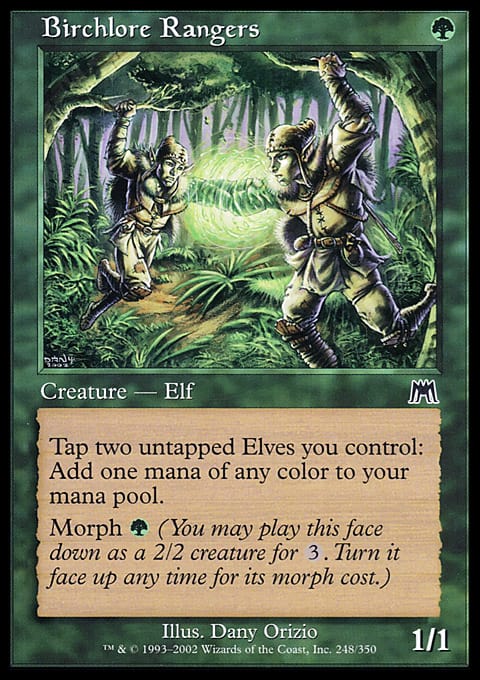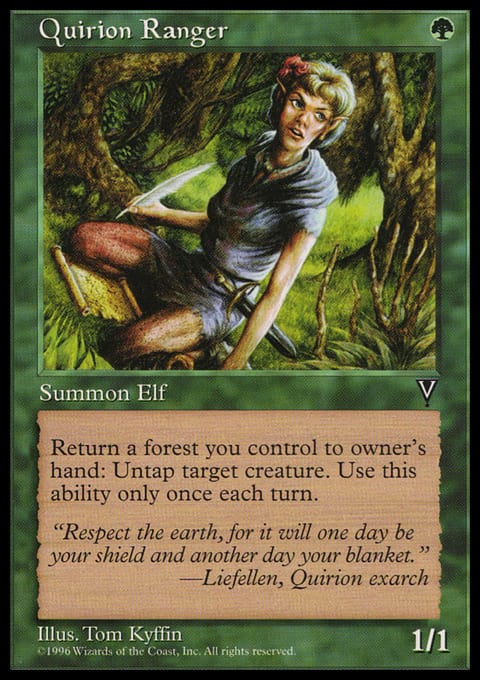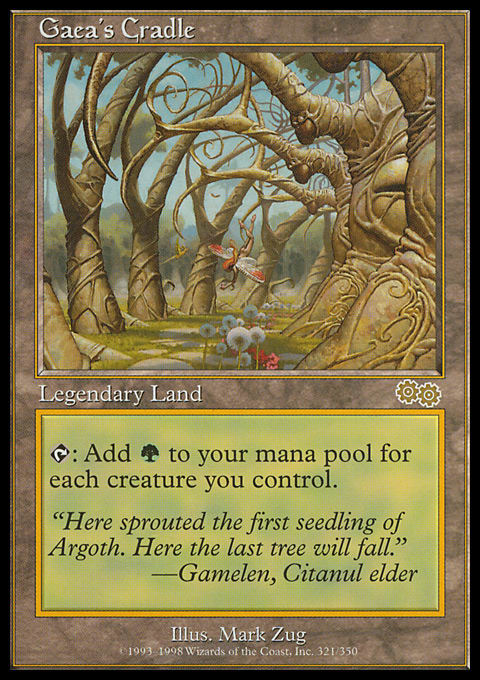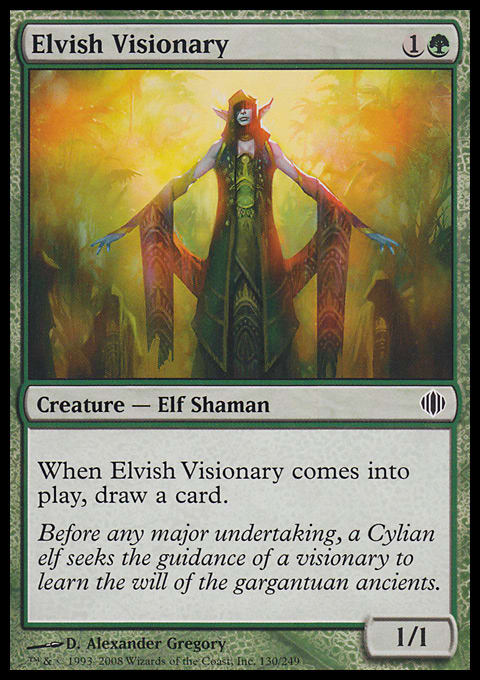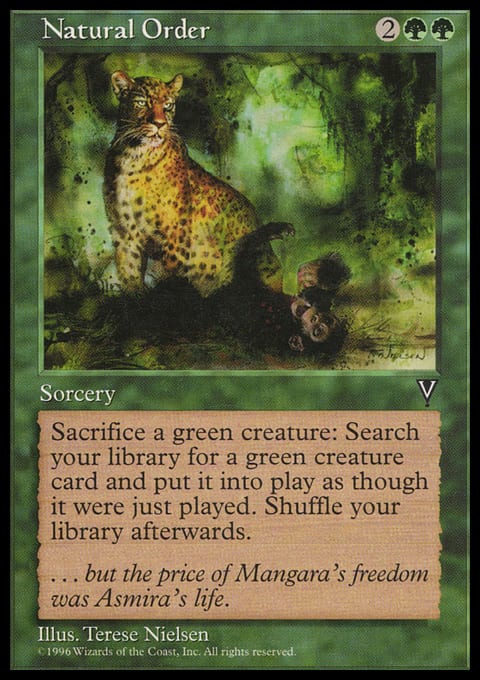I want to apologize for the delay in the release of the second installment of my Legacy Elves Guide. I had to skip my last article date due to travel complications and a Japanese arcade related injury. But I’m back today, and I’m ready to dive even deeper into my favorite deck in the game. In my previous article, I provided some insight into my general philosophy regarding the deck, talked about the deck’s position in the format after the recent bannings, and went over the cards in the main deck. In this installment, I’m going to discuss general gameplay and examine the sideboard.
Macro Planning
In my last article, I emphasized the importance of acknowledging Elves as a combo deck. It’s critical to recognize this because it not only affects how you construct the deck, as I already addressed, but it also affects your in-game decision making as well. Taking this into account, I prioritize developing my mana in the early game above all else. As an example, I’ll often use a Green Sun's Zenith to get a Dryad Arbor rather than playing a non-mana dork creature on the first turn of the game, despite the Green Sun's Zenith having more value later on in the game. After developing your mana, you’re looking to end the game as soon as possible with the aid of a Glimpse of Nature or Natural Order. It is important to note that while Glimpse of Nature is a combo card, it’s perfectly fine, and often correct, to just play it for some value during this point in the game. Casting a value Glimpse allows you to assemble a sizeable board presence which sets you up to win with a Natural Order or Green Sun's Zenith the following turn, and it does this while simultaneously digging for these cards.
In an ideal scenario, you never reach the late-game because you’ve already won, but this obviously isn’t the case quite frequently. But it’s here where Elves true strength lies. When it comes to goldfish speed and how easy the deck is to interact with, Elves is solidly behind the other combo decks of the format. And if this was all that mattered, there would never be a reason to actually play the deck. But what Elves does have going for it is its resiliency. Unlike most other combo decks, the combo pieces in Elves are real Magic cards with Deathrite Shaman, Elvish Visionary, and Wirewood Symbiote being the most notable. So, if you weren’t able to find a way combo your opponent, or if your opponent disrupted your combo, your plan becomes to leverage these cards in order to win. In these situations, getting the Visionary-Symbiote engine going will put you solidly ahead of your opponent on cards, and you likely will have the resources to attempt to combo your opponent again after just a few turns. Another option in these scenarios, is to get some shots in with your remaining creatures and assemble a board with a Deathrite and some untappers to end the game quickly while both you and your opponent are low on resources. This comes up often in postboard games against combo decks.
Mulliganing
Determining when to and when to not mulligan with Elves can be quite tricky. The deck has a glut of individually weak cards and needs a mass of resources in order to fully function, so mulliganing is a scary proposition. But with that being said it’s still imperative that you mulligan fairly aggressively. You simply cannot keep hands that lack any real action. Let’s take a look at some examples of opening hands.
(You are the play in each of the following examples)
Example 1:
This is a hand that I would mulligan. It has lands and spells, and there’s a reasonable amount of cards you can top deck, but there’s very few decks in the format that are incapable of punishing you for keeping a hand like this. An appropriate analog to this hand is the burn hand that looks good, but in reality is only good at getting your opponent to 11. Sometimes this hand might get there, but you’re going to flounder out and die too often to justify keeping it.
Example 2:
I would also mulligan this hand. Unlike the last one, this hand has a lot going for it, but the strength of the hand is entirely contingent on getting to untap with your Dryad Arbor. In some matchups this hand would be very good, but it’s just a bit too risky. In a format full of Wastelands, Lightning Bolts, Swords to Plowshares, and Fatal Pushes, the odds of your opponent having a way to interact with your Dryad Arbor is too high for me to feel comfortable keeping this hand.
Example 3:
Despite only having a single non-basic land, this hand is fantastic. This hand is just an example of land light hands being completely fine to keep with this deck, for your mana producing creatures are more than sufficient. What’s interesting about hands like this is how fragile they can be. Proper sequencing goes a long way into making sure you get the most of a hand like this. Which segways me perfectly into the next topic
Micro Planning
Elves can be quite difficult to play at times. I’ve been playing the deck for years, and I’m still constantly confronted with new decisions. There are so many unique micro decisions that it would be impossible for me to tell you what to do in all of them. It’s an ability you have to develop through practice.
Take a look at Example 3 from the previous section. In the likely scenario that your first draw is a brick, probably a Craterhoof Behemoth because it always is, what would you want to lead on? There are two options as far as I’m concerned; you can lead on Quirion Ranger or you can lead on Nettle Sentinel, and I think there are arguments for both.
The argument for leading on Quirion Ranger is that it plays around Wasteland. You’ll have the ranger in play to the protect the Bayou, so you’re guaranteed to have access to mana on your second turn. With this line, if you untap unimpeded, you’ll be able to cast everything in your opener, and you can even cast the Visionary twice.
The argument for leading on Nettle Sentinel is that it plays around a removal spell much better. If you were to lead on Quirion Ranger and your opponent plays a Lightning Bolt on it, your next turn is likely just going to be you playing a Nettle Sentinel and passing. If you lead on Nettle Sentinel and your opponent plays a Lightning Bolt on it, your next turn is Quirion Ranger, into Birchlore Rangers, into Wirewood Symbiote. In this scenario you have a great board position, and your important elves are protected. And If you untap unimpeded here, you’ll have access to one more mana after casting the Visionary for the 2nd time than you did in the other scenario.
So it seems like the question is a coin flip. Do we play around a Wasteland or a removal spell? It would be easy to stop there, but we can break this down even further. If I were to lead on Nettle Sentinel, I believe my opponent would need to have a fairly specific hand in order to justify firing off a Wasteland in their position. As long as I have a follow up play, they’ll be pretty far behind in the game at that point. If they have the option between using a removal spell or a Wasteland, I would expect them to lead on the removal spell in most situations. But in addition to what’s more likely, we also have to factor in the risk. The chances you lose the game on the spot are much higher if you get hit with a Wasteland than it is if you get your Quirion Ranger killed. It’s only the first turn of the game, and there’s already so much to think about. There’s a very real chance that this seemingly innocuous play decides the entire match. And the fact that you’re frequently presented with decisions like this one, is why I enjoy playing the deck so much. After some deliberation, I know what I would do here, but I want to hear what you all would do first. Like I said, this is about developing your ability to work through sequencing decisions, so I want you to figure out what you would want to do and why without me influencing you any more than I already have. I’ll explain what I would do and why in my next article.
The Sideboard
Elves Sideboard ? Legacy | Andrew Jessup
- Scavenging Ooze: Powerful enough to warrant main deck consideration, Scavenging Ooze is one of your best sideboard cards. Ooze has utility as a late game win condition in long grindy matchups, and it’s an incredibly useful hoser against any graveyard centric strategy. And while it's often not the most effective card against something like Dredge when it’s in other decks, the fact that Elves has the ability to produce massive amounts of Green mana mitigates this entirely.
- Reclamation Sage: I’m beyond ecstatic to finally have this card back where it belongs, the sideboard. While I’ve lamented the fact that I was forced to include this card in my main deck in the past, Reclamation Sage is the literal perfect sideboard card for the deck. It has an effect that you desperately want access to, it’s a cheap Green Sun's Zenith target, and it’s an Elf so it synergizes with Wirewood Symbiote.
- Progenitus: Like anyone who’s played this card out of the sideboard of Elves before, I have mixed feelings about Progenitus. On one hand, the card has won me tons of games that no other card in Magic possibly could have. But on the other, I’ve drawn this card an unrealistic amount of times, and it just rots away in your hand every time (except for the one time I hardcasted it). Overall, I think it’s a unique enough effect that you want access to it. It’s pretty common to have difficulty developing a board presence in postboard games, and having access to Progenitus is great in those situations.
- Abrupt Decay: The value of this card in the board has certainly plummeted without Counterbalance, but you still need to have some. The overlap of being able to deal with Chalice of the Void and Delver of Secrets is enough to justify its inclusion, but it deals with several other problematic permanents in addition to those.
- Surgical Extraction: I'm admittedly one of the biggest Surgical Extraction haters out there. I can’t stand listening to people constantly attempting to justify boarding this card in matchups they have no business doing so. But even I can admit that in the matchups where you actually want this card, it’s fantastic. Two of the absolute worst matchups for Elves are Dredge and Reanimator, so having a card that does a decent job at disrupting them without sacrificing any tempo is game changing. It also has utility in other matchups too, Lands being a notable example.
- Thoughtseize/Cabal Therapy: These are how you interact with combo decks. While Elves can win as early as turn two, it’s a bit slower than most other combo decks on average. You need to be able to interact with them. There are a few too many combo decks that operate on a unique axis in the format to justify running more specific hate cards. Discard spells get the nod because they’re universally applicable. Aside from corner case matchups, I tend to only like bringing the discard spells in against combo decks. Using them to try and strip counterspells and push your combo cards though is a mistake. The 4/2 split is a concession to the consistency of Thoughtseize. Cabal Therapy certainly has more potential to be backbreaking; but, against a deck like Storm, missing on the front half can often just mean losing on the spot.
This seems like a good place to leave off for today. Now that we discussed some gameplay and the sideboard, we can talk about how to approach specific matchups in what I expect to be the final part. I’ll also address the notable omissions from my list because I saw a few people request that in the last article. If there’s anything you’re curious about that I haven’t covered or mentioned, just let me know. I’ll try to get everything in.
Previous Entries:
— Guide to Legacy Elves: Part 1













